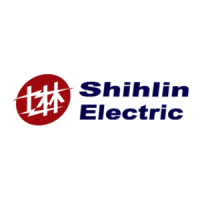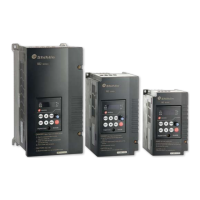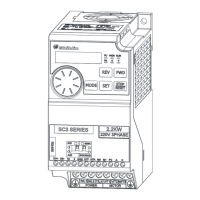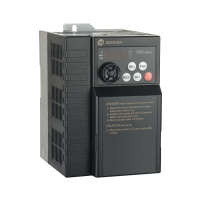
Do you have a question about the Shihlin electric SE3 Series and is the answer not in the manual?
| Brand | Shihlin electric |
|---|---|
| Model | SE3 Series |
| Category | Inverter |
| Language | English |
Crucial safety guidelines for installation, operation, and maintenance to prevent hazards and ensure safe usage.
Explains essential terms and concepts used throughout the manual for clear understanding.
Details how to interpret the information provided on the inverter's nameplate for product identification.
Explains the meaning of different model codes and suffixes for accurate product selection.
Provides detailed electrical specifications including capacity, current, voltage, and motor compatibility.
Outlines general technical details, control methods, environmental requirements, and communication features.
Covers essential installation procedures, wiring guidelines, and environmental considerations for safe setup.
Describes the various operating modes and their configurations for target frequency and motor starting signals.
Lists crucial checks and preparations necessary before powering on and operating the inverter.
Provides steps for conducting a test run to verify operation and identify potential issues before normal use.
Details parameters for inverter model, firmware, restoration, password setup, and monitoring display.
Covers fundamental parameters for motor control, frequency, voltage, acceleration/deceleration, and torque settings.
Explains configuration parameters for analog input/output terminals and signal processing.
Details parameters for configuring digital input/output terminals, including function selection and logic settings.
Covers essential parameters for motor control, including automatic measurement and motor type settings.
Outlines various protection functions like over-current, over-voltage, stall prevention, and maintenance alarms.
Details parameters for communication protocols such as Modbus, Shihlin, CANopen, and Ethernet setup.
Explains PID control parameters for tuning, deviation limits, and switchover functions for process control.
Covers parameters related to PG (Pulse Generator) feedback, including encoder settings and error detection.
Details parameters for various application functions like DC brake, restart modes, and power supply switching.
Provides parameters for tension control, including mode selection, tension setting, and winding radius calculation.
Covers parameters that users can register and do not require restoration to factory default values.
Outlines the procedures for performing regular inspections to ensure the inverter's condition and prevent potential faults.
Lists daily checks for the inverter's environment, power supply, wirings, and motor operation.
Details periodic checks for inaccessible areas and specific components like capacitors and IGBT modules.
Explains methods for measuring voltage, current, and power on the main circuit using appropriate instruments.
A comprehensive list of all parameters, their groups, numbers, names, ranges, defaults, and page references.
Lists all alarm codes, their causes, and troubleshooting steps for diagnosing and resolving inverter faults.
Provides guidance for diagnosing and resolving common issues related to motor operation, parameters, and control circuits.
Describes available optional accessories such as communication cards, I/O cards, and PG cards for enhanced functionality.
Details the inverter's compliance with Low Voltage and Electromagnetic Compatibility Directives for European markets.
Explains the WEEE symbol and guidelines for proper disposal and recycling of electronic waste.












